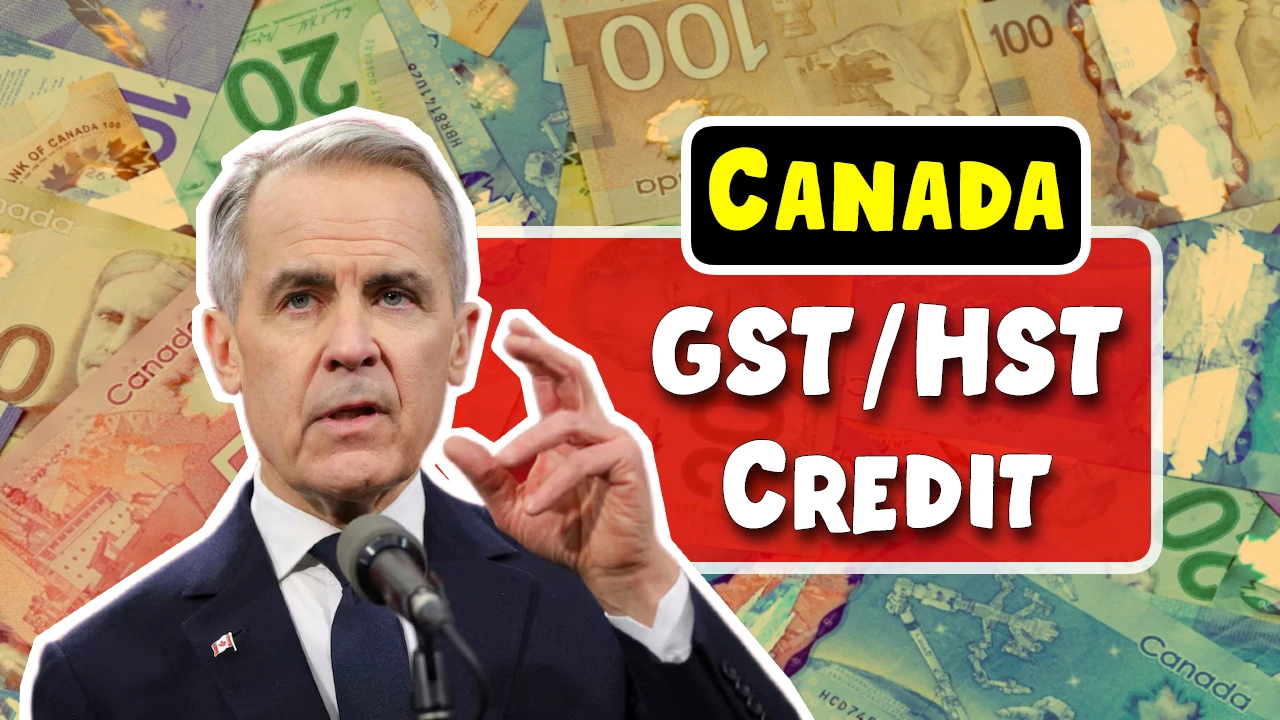The Canada GST/HST tax credit is a non-taxable amount that is meant to compensate individuals and families with low or modest income who have to pay. It subtracts the Goods and Services Tax (GST) or the Harmonized Sales Tax (HST) we pay on everything from food to clothing to utilities.
It is issued every three months by the Canada Revenue Agency (CRA) and calculated based on the income and size of your family. Canadians won’t have to apply separately for the benefit. He CRA determines eligibility, and payments are received once taxes are filed.
Canada GST/HST Credit 2025
Now in 2025, the GST/HST credit is one of the most generous free moneys that any low-income Canuck could ever receive. For individuals, that can mean as much as $460 a year, which is far more for families, based on the number of children. For example, a family with two children could be receiving more than $1,000 each year in GST/HST credits. In inflation, when the economy is bad, the instruments available in the economy are not efficient.
GST/HST Credit Payment Dates Overview
| Department | Canada Revenue Agency (CRA) |
| Article On | Canada GST/HST Credit 2025 |
| Country | Canada |
| Eligibility | Tax Resident of Canada |
| Amount | As per eligibility |
| Payment Mode | Direct Deposits and Paper Checks |
| Payment Schedule | Quarterly Payments |
| Category | Canada |
| Official Category | Canada.ca |
Eligibility for GST/HST Credit
- Be a tax resident of Canada
- 19 years of age or older (unless spouse/common-law partner, or parent with child)
- No income, but still have to whiz by the I.R.S. ERROR: You have to file a return.
- Family income must be below an annual limit (This limit varies with family size)
- Parents have to have eligible children registered to their tax file or Canada Child Benefit
How the GST/HST Credit Works
GST is the tax that is applicable on all goods and services sold right from coast to coast to coast, across Canada, and HST is the marriage of that GST and a provincial sales tax in certain provinces. It was put in place by the government because everyone pays this tax, even on what many of us consider essentials, and the government wanted to provide some relief to those who might struggle to make ends meet.
The credit is meant to make sure that low-income Canadians receive some of their spending taxes back over the year. Quarterly dividends are paid in January, April, July, and October. Payments normally end up in the recipient’s bank account automatically. If you don’t have direct deposit set up, the CRA sends a cheque to your last known address.
The amount of your credit will depend on several factors, including how much all the other money-earning members of your household make; how many children you have; if you are married or living common-law; and if you live in a province that gives out more in credits.
Provinces Providing Additional GST/HST Relief
In some provinces, you can also receive additional assistance as part of the same payment, the federal GST/HST credit. These are called provincial top-ups and are included in the total credit amount already. Well, the provinces all have that and more.
For example, families in Newfoundland and Labrador can receive an additional quarterly payment through the Newfoundland and Labrador Income Supplement. The province of Ontario’s Sales Tax Credit is combined with the GTA/HST credit to help Ontario-based residents. Those extra payments are helpful, especially in provinces where the cost of living also happens to be higher, and are added to your payments without requiring additional paperwork. You simply need to file your taxes on time each year.
Process of Credit Being Delivered Automatically
You do not have to apply on a separate form for the GST/HST credit. The most important thing is to submit (some kind of) tax return each year. Whether you have an income or tax payable or not, if you file and have no amount owing, that is how the CRA can determine whether you were eligible.
Once the return is filed, the Canada Revenue Agency will calculate the credit and issue a payment to eligible taxpayers. This is true too for families. If anything changes in your family or income during the year you marry, get divorced, or have a child, you have to let the CRA know. This keeps current records on them and reduces the likelihood of such errors as underpayments or failures to pay.
The Importance of the GST/HST Credit
The achievement of the GST/HST credit is not that it stands out from other benefits, but in what it does in helping families deal with the bite of higher prices. But for those on the minimum wage or social assistance, this payment can provide some help with the cost of grocery shopping, a few household supplies, or a small bill.
This is a great tool if you are a parent, retiree, student, or if you are entering the world of finance and are trying to grow your financial safety net. The credit is doled out quarterly, so it delivers a relatively steady financial jolt through the year.
The amount of support the organization receives long-term, rather than once a year at tax time, with the way the new system allocates funding. It’s a tax-free benefit, too, so it doesn’t count as other benefits and doesn’t need to be reported as income. It is for many Canadians a regular, vital income.
FAQs
Do new immigrants get GST/HST credit in Canada?
Yes. New arrivals can also apply by submitting a special form once in Canada. Payments will only begin after the CRA has received the form and tax residency information has been verified.
So, would I need to reapply every year for the credit?
No, if the person continues to file a tax return in subsequent years and remains eligible based on the income test, the CRA will reassess and pay promptly.
When will the GST 5007 payments be sent?
Members receive quarterly payments usually in January, April, July, and October. If the annual amount overall is trivial, the CRA might combine them into one July payment.

